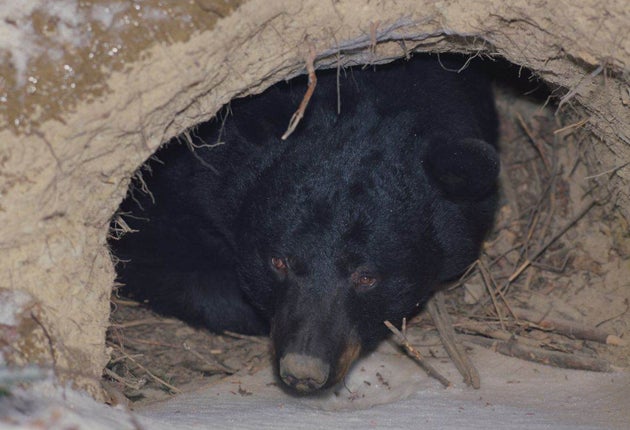American science summit: How bears could help man get to Mars

Your support helps us to tell the story
From reproductive rights to climate change to Big Tech, The Independent is on the ground when the story is developing. Whether it's investigating the financials of Elon Musk's pro-Trump PAC or producing our latest documentary, 'The A Word', which shines a light on the American women fighting for reproductive rights, we know how important it is to parse out the facts from the messaging.
At such a critical moment in US history, we need reporters on the ground. Your donation allows us to keep sending journalists to speak to both sides of the story.
The Independent is trusted by Americans across the entire political spectrum. And unlike many other quality news outlets, we choose not to lock Americans out of our reporting and analysis with paywalls. We believe quality journalism should be available to everyone, paid for by those who can afford it.
Your support makes all the difference.An unprecedented investigation into the biology of hibernating bears has provided scientists with vital insight into "suspended animation", which might one day allow future space travellers to sleep for months at a time.
American black bears, Ursus americanus, are some of the largest animals to hibernate, yet scientists know little about how their bodies cope without eating, drinking or expelling waste for five to seven months during the winter period.
Some experts have even questioned whether bears experience true hibernation, because their body temperature falls only a few degrees below the normal 36C rather than plummeting to the near-freezing temperatures experienced by smaller mammals.
However, a study that monitored the daily physiological changes in five American black bears has found that they do indeed experience true hibernation, involving a dramatic 75 per cent decline in their basal metabolic rates – the amount of oxygen consumed by their body's tissues.
Scientists believe that the findings will give them valuable information about how to reduce metabolic activity in the human body, which could lead to new medical treatments, as well as preparing the body for space travel using suspended animation.
"When black bears emerge from hibernation, it has been shown that they have not suffered the losses in muscle and bone mass that would be expected to occur in humans," said Brian Barnes of the University of Alaska in Fairbanks.
"If we could discover the genetic and molecular basis for this protection, and for the mechanisms that underlie the reduction in metabolic demand, we could derive new therapies and medicines to prevent osteoporosis, disuse atrophy of muscle, or even place injured people in a type of suspended or reduced animation," Professor Barnes said.
One of the biggest surprises of the study, presented to the American Association for the Advancement of Science in Washington, was that black bears are able to slow down their metabolism without the dramatic fall in body temperature.
In smaller mammals a 50 per cent fall in metabolism, as measured by the amount of oxygen consumed per gram of body weight per hour, leads to a 10C fall in core body temperature. But in black bears, the study revealed that a 75 per cent decline in metabolic rate was accompanied by only a 5C or 6C fall in core temperature.
They also found that the heart of the black bear develops an unusual pattern of beating, slowing from 55 beats per minute to about 14 beats per minute, but varying according to whether the animals were breathing in at the time.
"Sinus arrhythmia is a variation in heartbeat frequency relative to breathing, and the bears show an extreme form of this. They have an almost normal heartbeat when they take a breath, but between breaths the bears' hearts beat very slowly," said Oivind Toien, of Alaska University.
"If our research could help by showing how to reduce metabolic rates and oxygen demands in human tissues, one could possibly save people. "
The experiment was carried out on black bears in Alaska that had strayed too close to human dwellings and were taken to a forest reserve where they were housed in wooden structures designed to simulate real dens.
After emerging from hibernation, it took 2-3 weeks for them to regain their normal metabolisms.
Join our commenting forum
Join thought-provoking conversations, follow other Independent readers and see their replies
Comments